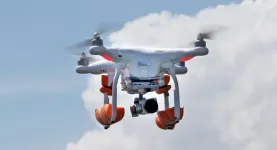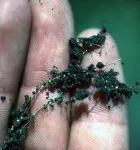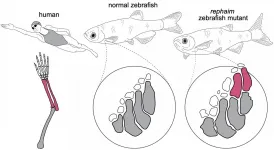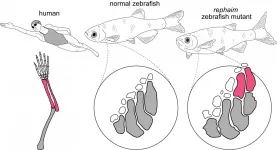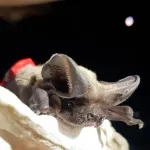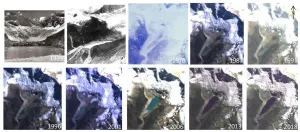(Press-News.org) Floating sea macro-litter is a threat to the conservation of marine ecosystems worldwide. The largest density of floating litter is in the great ocean gyres -systems of circular currents that spin and catch litter- but the polluting waste is abundant in coastal waters and semi closed seas such as the Mediterranean.
MARLIT, an open access web app based on an algorithm designed with deep learning techniques, will enable the detection and quantification of floating plastics in the sea with a reliability over 80%, according to a study published in the journal Environmental Pollution and carried out by experts of the Faculty of Biology and the Biodiversity Research Institute of the University of Barcelona (IRBio).
This methodology results from the analysis through artificial intelligence techniques of more than 3,800 aerial images of the Mediterranean coast in Catalonia, and it will allow researchers to make progress in the assessment of the presence, density and distribution of the plastic pollutants in the seas and oceans worldwide. Among the participants in the study, published in the journal Environmental Pollution, are the experts of the Consolidated Research Group on Large Marine Vertebrates of the UB and IRBio, and the Research Group on Biostatistics and Bioinformatics (GRBIO) of the UB, integrated in the Bioinformatics Barcelona platform (BIB).
Litter that floats and pollutes the ocean
Historically, direct observations (boats, planes, etc.) are the base for the common methodology to assess the impact of floating marine macro-litter (FMML). However, the great ocean area and the volume of data make it hard for the researchers to advance with the monitoring studies.
"Automatic aerial photography techniques combined with analytical algorithms are more efficient protocols for the control and study of this kind of pollutants", notes Odei Garcia-Garin, first author of the article and member of the CRG on Large Marine Mammals, led by Professor Àlex Aguilar.
"However, -he continues-, automated remote sensing of these materials is at an early stage. There are several factors in the ocean (waves, wind, clouds, etc.) that harden the detection of floating litter automatically with the aerial images of the marine surface. This is why there are only a few studies that made the effort to work on algorithms to apply to this new research context".
The experts designed a new algorithm to automate the quantification of floating plastics in the sea through aerial photographs by applying the deep learning techniques, automatic learning methodology with artificial neuronal networks able to learn and take the learning to higher levels.
"The great amount of images of the marine surface obtained by drones and planes in monitoring campaigns on marine litter -also in experimental studies with known floating objects- enabled us to develop and test a new algorithm that reaches a 80% of precision in the remote sensing of floating marine macro-litter", notes Garcia-Garin, member of the Department of Evolutionary Biology, Ecology and Environmental Sciences of the UB and IRBio.
Preservation of the oceans with deep learning techniques
The new algorithm has been implemented to MARLIT, an open access web app described in the article and which is available to all managers and professionals in the study of the detection and quantification of floating marine macro-litter with aerial images. In particular, this is a proof of concept based on an R Shiny package, a methodological innovation with great interest to speed up the monitoring procedures of floating marine macro-litter.
MARLIT enables the analysis of images individually, as well as to divide them into several segments -according to the user's guidelines-, identify the presence of floating litter in each certain area and estimate their density with the image metadata (height, resolution). In the future, it is expected to adapt the app to a remote sensor (for instance, a drone) to automate the remote sensing process.
At a European level, the EU Marine Strategy Framework Directive indicates the application of FMML monitoring techniques to fulfil the continuous assessment of the environmental state of the marine environment. "Therefore, the automatization of monitoring processes and the use of apps such as MARLIT would ease the member states' fulfilment of the directive", conclude the authors of the study.
INFORMATION:
A new study led by the University of Kent's Durrell Institute of Conservation and Ecology (DICE) has found that elephants living around the world-famous Masai Mara National Reserve, Kenya, are crop-raiding closer to the protected area, more frequently and throughout the year but are causing less damage when doing so.
Findings show that the direct economic impact of this crop-raiding in the Trans Mara region has dropped, yet farmers have to spend more time protecting their fields, further reducing support for conservation in communities who currently receive few benefits from living with wildlife.
The research published by Biological Conservation ...
BUFFALO, N.Y. -- All things being equal, large, long-lived animals should have the highest risk of cancer.
The calculation is simple: Tumors grow when genetic mutations cause individual cells to reproduce too quickly. A long life creates more opportunities for those cancerous mutations to arise. So, too, does a massive body: Big creatures -- which have many more cells -- should develop tumors more frequently.
Why, then, does cancer rarely afflict elephants, with their long lifespans and gargantuan bodies? They are some of the world's largest land animals.
A new study delves into this ...
Laparoscopic surgery, a less invasive alternative to conventional open surgery, involves inserting thin tubes with a tiny camera and surgical instruments into the abdomen. To visualize specific surgical targets, ultrasound imaging is used in conjunction with the surgery. However, ultrasound images are viewed on a separate screen, requiring the surgeon to mentally combine the camera and ultrasound data.
Modern augmented reality (AR)-based methods have overcome this issue by embedding ultrasound images into the video taken by the laparoscopic camera. These AR methods precisely map the ultrasound data coordinates to the coordinates of the ...
Over the past 30 years, the use of soil fumigants and nematicides used to protect cole crops, such as broccoli and Brussel sprouts, against cyst nematode pathogens in coastal California fields has decreased dramatically. A survey of field samples in 2016 indicated the nematode population has also decreased, suggesting the existence of a natural cyst nematode controlling process in these fields.
Thanks to California's pesticide-use reporting program, nematologists have been able to follow the amounts of fumigants and nematicides used to control cyst nematodes over the past three decades.
"Application of these pesticides steadily declined until they were completely eliminated in ...
As the coronavirus pandemic continues to devastate communities worldwide, Black Americans who face racial discrimination in hospitals and doctor's offices weather additional stresses that can exacerbate threats from COVID-19. A new University of Georgia study examines the interplay between the perceptions of coronavirus threat and psychological distress among Black Americans.
The additional stresses arise from the prevalent belief among Black Americans worried that they might not recover from how hospitals treat them if they become infected with the coronavirus.
"While the notion has been floated among commentators, this is the first study that uses nationally representative data to assess whether this threat, or feeling, ...
BOSTON - Tiny particles of air pollution -- called fine particulate matter -- can have a range of effects on health, and exposure to high levels is a known risk factor for cardiovascular disease. New research led by investigators at Massachusetts General Hospital (MGH) reveals that fine particulate matter has a detrimental impact on cardiovascular health by activating the production of inflammatory cells in the bone marrow, ultimately leading to inflammation of the arteries. The findings are published in the END ...
By tweaking a single gene, Harvard scientists engineered zebrafish that show the beginning formation of limb-like appendages. The researchers stumbled upon this mutation, which may shed light on the sea-to-land transition of vertebrates, while screening for various gene mutants and their impact on fish development. Their discovery, outlined February 4th in the journal Cell, marks a fundamental step in our understanding of fin-to-limb evolution and how surprisingly simple genetic changes can create great leaps in the development of complex structures.
"It was a little bit unbelievable that just one mutation was able to create completely new bones and joints," says M. Brent Hawkins (@Homeobox), first author of ...
Fin-to-limb transition is an icon of key evolutionary transformations. Many studies focus on understanding the evolution of the simple fin into a complicated limb skeleton by examining the fossil record. In a paper published February 4 in Cell, researchers at Harvard and Boston Children's Hospital examined what's occurring at the genetic level to drive different patterns in the fin skeleton versus the limb skeleton.
Researchers, led by M. Brent Hawkins, a recent doctoral recipient in the Department of Organismic and Evolutionary Biology, performed forward genetic screens in zebrafish looking for mutations that affect the fin skeleton. Unlike tetrapod limbs, which have complex skeletons with many bones that articulate ...
Although scientists knew that some bats could reach heights of over 1,600 meters (or approximately one mile) above the ground during flight, they didn't understand how they managed to do it without the benefit of thermals that aren't typically available to them during their nighttime forays. Now, researchers reporting in the journal Current Biology on February 4th have uncovered the bats' secret to high-flying.
It turns out that the European free-tailed bats they studied--powerful fliers that the researchers documented sometimes reaching speeds of up to 135 kilometers (84 miles) per hour in self-powered flight--do depend on orographic uplift that ...
As the planet warms, glaciers are retreating and causing changes in the world's mountain water systems. For the first time, scientists at the University of Oxford and the University of Washington have directly linked human-induced climate change to the risk of flooding from a glacial lake known as one of the world's greatest flood risks.
The study examined the case of Lake Palcacocha in the Peruvian Andes, which could cause flooding with devastating consequences for 120,000 residents in the city of Huaraz. The paper, published Feb. 4 in Nature Geoscience, provides new evidence for an ongoing legal case that hinges on the link between greenhouse gas emissions and particular climate change impacts.
"The scientific challenge was to provide the clearest and cleanest assessment ...
